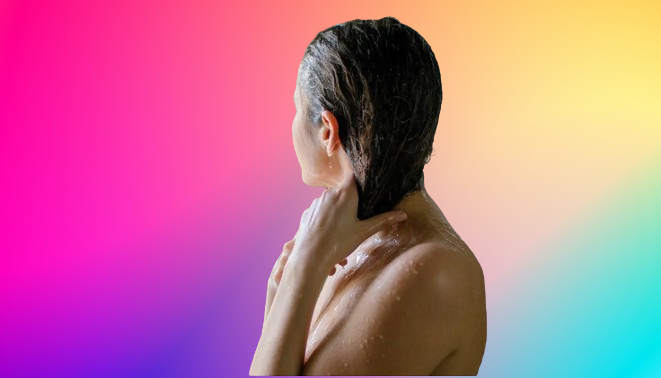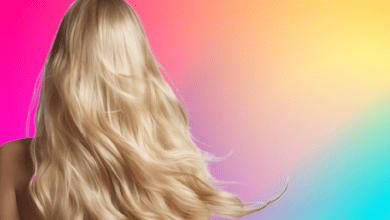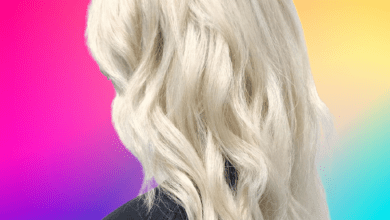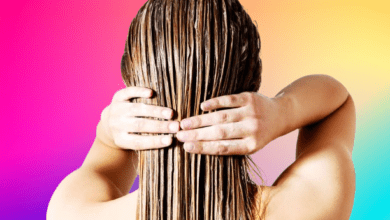How to Wash Your Hair Properly: A Step-by-Step Guide

It’s likely that over the years, you haven’t given hair washing much thought.
Yes, it’s possible that you did some research before choosing your conditioner and shampoo. However, it’s unlikely that you gave much thought to whether you’re really washing your hair properly.
Is there a proper method for washing hair?
If you want the best results, there’s a little more to it than just wetting your hair, lathering it up with shampoo, rinsing it off, and then repeating with conditioner.
Professional hairstylist Monica Davis says, “You can ensure that you don’t damage your hair and follicles by applying proper hair washing techniques.” Additionally, it will ensure that you do not injure your scalp’s skin.
This is why there are a few things you should be aware of if you really want to take the best possible care of your scalp and hair. But don’t worry, we’re available to assist.
Think carefully about the products you use.
Put differently, don’t choose your products based solely on their scent.
Identify the best shampoo for your type of hair.
You risk doing more harm than good to your hair if you choose the wrong shampoo.
- Use a mild clarifying shampoo if your hair is fine—that is, if you can hardly feel or see a single hair between your fingertips.
- If your hair is coarse or thick, look for a moisturizing product.
- Choose a color-safe product that won’t remove your color every time you wash your hair if you have color-treated hair.
- Seek out a clarifying shampoo for bleached hair to avoid unwelcome yellow tones.
Unaware of the type of hair you possess? You can always seek advice from your stylist.
Here is a simple tip that may be useful: Take a single hair strand and roll it between your index finger and thumb. You have fine hair if it’s hard for you to see or feel.
You should definitely stay away from shampoos that contain silicones and sulfates, regardless of the type of hair you have. Over time, these ingredients may cause your hair to become dry even though they may help your shampoo foam up and leave it feeling clean (Trusted Source). These substances deplete your hair of its natural oils, making it dull-looking and more prone to breakage.
This is particularly valid if you have dry, frizz-prone, or fine hair.
For certain individuals, particularly those with sensitive skin, sulfates can also irritate their skin. For this reason, sulfate-containing shampoos may be best avoided by those who have rosacea, eczema, or contact dermatitis.
Consider using a co-wash.
You might want to consider co-washing your hair if it’s coarse or dry.
According to Davis, “co-washing hair products are cleansing conditioners that offer moisturizing in addition to extra-gentle washing.” “A co-wash is a great idea to restore dry and coarse hair, as it is more susceptible to damage.” Co-washes contain more conditioning ingredients and basic shampoos contain more surfactant ingredients for foaming.
Recognize that natural cleaning is safe.
If you dilute household items like baking soda and apple cider vinegar with water, you can also try using them. Your hair will be cleaned and kept moisturized by these products.
If diluted with water, apple cider vinegar can actually help “remove stubborn hair products, deep clean your hair and scalp, and even reduce mild scalp inflammation caused by dandruff,” according to Davis.
Look for hydrating conditioners and additional optional items.
To prevent your hair from drying out or splitting at the ends, look for moisturizing conditioners.
Consider acquiring a detangling product if your hair is very prone to tangling, as well as a post-wash protectant, particularly if you have frizzy hair.
Additionally, you should use a high-quality hairbrush that won’t break your hair when brushing.
Don’t always wash your hair.
You risk depriving your hair of its natural oils if you wash it every day. Over time, this may cause drying and damage to your hair.
However, just like your shampoo, your hair type will affect how long is best to wash your hair.
Dry hair may only need to be washed once or twice a week, but oily hair types may need to be cleaned every two to three days.
In any case, allowing a few days to pass between shampoos allows your hair’s natural oils to continue their beneficial work and maintain the health of your hair.
Recognize the type of water you use.
Although most of us don’t give it much thought, the water we use to wash our hair can have an impact.
Mineral deposits from hard water, including calcium and magnesium, can cause a film to form on your hair. It may be challenging to properly moisturize your hair after watching this movie.
Hard water can cause your hair to dry out over time and become more fragile over time. If you have a skin condition like psoriasis or eczema, or if the hard water severely irritates your scalp, it may even cause hair loss in extreme cases.
For this reason, it’s said that some famous people insisted on using bottled water to wash their hair. Naturally, this isn’t feasible for the majority of us.
The majority of us have very little control over the mineral content of the water that exits our showers, particularly if we rent our homes, in which case the landlord has the final say.
What then do you do? If you are the homeowner, you may want to think about installing a whole-house water softener. Installing a water softener shower head, which uses carbon cartridges to eliminate excess minerals and inexpensively purify your water, is an option if you rent.
Moreover, you can apply hair masks once or twice a week and use clarifying shampoos to help repair hair damaged by hard water.
According to Davis, “using leave-in conditioners can also help minimize the impact.”
What are the proper procedures for washing hair, then?
These are some fundamental actions you ought to take.
1. Thoroughly moisten your hair
Don’t start putting shampoo on right away. Let your hair get completely wet instead.
Your hair’s density and thickness may cause this to take longer than you anticipate. In order to ensure that all of your hair, including the ends, is completely wet, let the water run over your head for at least a minute before running your fingers through it.
According to Davis, letting your hair get completely wet with lukewarm water helps open the cuticles, which facilitates your hair’s later absorption of conditioner.
2. Put on some shampoo
Recall that the type of shampoo you use should be appropriate for your hair.
Additionally, you must ensure that you are using the recommended amount of shampoo for the length of your hair. If you use too little, your hair may not be thoroughly cleansed, and if you use too much, you may not get it all out.
Aim for a dollop of shampoo the size of a nickel if you have short hair. Consider quarter-sized hair if it is shoulder-length. Squeeze enough shampoo into your palm to roughly cover it if you have long hair.
In the palm of your hand, combine the shampoo with a small amount of water before using it on your hair. In this manner, Davis claims, you’ll lessen the shampoo’s direct effect on your scalp and use less product overall.
Next, be sure to cover your entire scalp and crown with the shampoo. Shampoo is not necessary, if at all, for the tips of your hair.
According to Davis, shampooing your scalp is more important than washing the tips of your hair. “Only apply shampoo to the scalp; let it rinse out and clean the rest of the hair.”
3. Take it easy on your scalp
Although it’s easy to feel tempted to use your nails to “loosen” buildup on your scalp, doing so is highly discouraged.
Davis says, “Our scalps are highly vulnerable to abrasive washing.” “Never scrub with your nails as this can lead to severe irritation or even infection.”
Instead, spend three minutes gently massaging your scalp without using any nails. Try to apply the same amount of pressure that a stylist would use to wash and massage your scalp.
“Avoid circular or harsh back and forth movements,” Davis continues, when massaging the shampoo into your scalp. “Avoid tangling and harming the follicles by moving your fingers and palms gently.”
4. Give everything a good rinse.
Rinse your hair for one to two minutes to make sure all of the soap is gone. One of the most common errors people make is unintentionally leaving shampoo in their hair, which causes buildup on the scalp.
Rinsing with cold water might be something you want to try if you have dry hair because it keeps hair nourished and strong. The naturally lubricating sebum layer in your hair, which shields and maintains its strength, is not dried out by cold water.
5. Use a conditioner.
Conditioner is unnecessary for your hair and could even make it greasy. Rather, work the conditioner through your hair from the mid-shaft to the ends.
After that, give it the suggested amount of time (usually indicated on the bottle). While some conditioners need to sit for three to five minutes, others need to sit for seven to eight. Your hair will become shinier after it has dried if you let it sit for this long to soften and smooth it out.
However, avoid leaving your conditioner in for too long as this could make it difficult to remove and leave residue behind.
You can detangle your hair with a wide-tooth comb while you wait for the conditioner to take effect.
6. Repeatedly rinse
Make sure you get it all out, just like you would with shampoo.
7. Arid
After taking a shower, pat dry your hair with a towel. Make sure not to rub your hair dry; instead, pat or squeeze it dry.
To dry your hair, try using an old T-shirt or a microfiber towel. Your hair may sustain more damage from materials with coarser fibers.
After towel drying, you can optionally apply a detangler or hair protectant.
In summary
It turns out that hair washing has a proper method.
You can keep your hair looking stronger, healthier, and glossier by taking the time to carefully select your products, buy a water softener, wash your hair carefully and thoroughly every few days, towel dry, or do all of the above.




